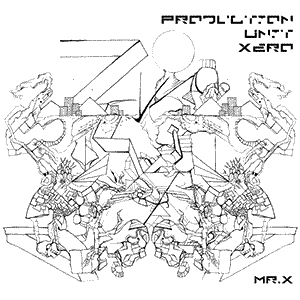Artist Spotlight: Brian Eno
Brian Eno: A Renaissance Man in Music and Art
Early Life and Education
Born on May 15, 1948, in Woodbridge, Suffolk, England, Brian Peter George St. John le Baptiste de la Salle Eno was raised in a working-class Catholic family. He attended St. Joseph’s College in Ipswich, where his love for music and art blossomed. Eno continued his artistic education at Winchester School of Art, where he studied painting and experimental music under composer Cornelius Cardew from 1966 to 1969.
Roxy Music and Early Collaborations
Eno’s professional music career began in 1971 when he joined the English rock band Roxy Music as their synthesizer player and keyboardist. He contributed to the band’s first two albums but left in 1973 due to creative differences. During this time, Eno started exploring his unique sound through collaborations with artists like Robert Fripp and John Cale.
Ambient Music Pioneer
Eno’s solo career began with the release of “Here Come the Warm Jets” (1974), which showcased his innovative approach to music. He ventured into ambient music with “Discreet Music” (1975), later solidifying his status as an ambient music pioneer with the release of the groundbreaking “Music for Airports” (1978).
Producer and Collaborator
Over the years, Eno has collaborated with and produced for numerous prominent artists, including David Bowie, Talking Heads, and U2. His work has helped shape the sound of iconic albums like Bowie’s “Berlin Trilogy” and U2’s “The Joshua Tree.”
Visual Art and Writing
Beyond music, Eno has made his mark as a visual artist, writer, and lecturer, creating artworks that incorporate light and sound. He has written essays and books on various topics, from music and culture to technology.
Oblique Strategies and Innovation
Eno co-created Oblique Strategies, a deck of cards designed to stimulate creativity and inspire new ideas. The deck has been widely adopted by artists and professionals across different disciplines.
Legacy and Influence
Brian Eno’s influence spans over five decades, with his innovative work in music, art, and culture leaving an indelible mark on multiple generations of artists. As a pioneer of ambient music, a master producer, and a creative thinker, Eno’s legacy will endure for years to come.
Top Albums:
- Here Come the Warm Jets (1974): Eno’s first solo album features a unique blend of art rock and experimental pop, showcasing his innovative approach to music.
- Another Green World (1975): This album is a significant departure from Eno’s previous work, featuring more instrumental tracks and a transition towards ambient music.
- Discreet Music (1975): Often considered the first true ambient album, Discreet Music exemplifies Eno’s groundbreaking approach to creating atmospheric soundscapes.
- Music for Airports (1978): As the first installment in Eno’s Ambient series, this album redefined the genre and solidified his status as an ambient music pioneer.
- Before and After Science (1977): This album showcases Eno’s versatility, blending elements of art rock, pop, and experimental music.
- Apollo: Atmospheres and Soundtracks (1983): Composed for the documentary film “For All Mankind,” this album features hauntingly beautiful ambient music inspired by the Apollo moon missions.
- My Life in the Bush of Ghosts (1981): Co-created with David Byrne of Talking Heads, this album combines samples from various sources with experimental and world music, marking a significant milestone in the development of electronic music.
- Another Day on Earth (2005): Eno’s return to songwriting after a long hiatus, this album features an evocative blend of electronic and ambient music.
- Reflection (2017): This generative ambient album exemplifies Eno’s constant exploration of new technologies and artistic approaches to create immersive soundscapes.
- Small Craft on a Milk Sea (2010): A collaboration with Jon Hopkins and Leo Abrahams, this album is a collection of evocative and experimental electronic tracks, showcasing Eno’s ability to innovate within various musical contexts.
These albums represent only a fraction of Brian Eno’s extensive body of work, but they provide a comprehensive overview of his contributions to music and his enduring influence on multiple genres.




